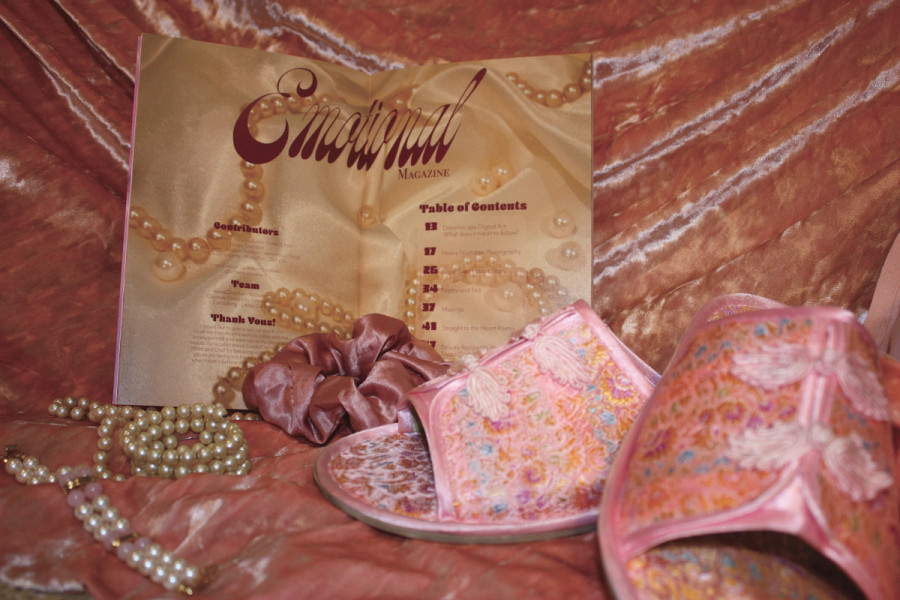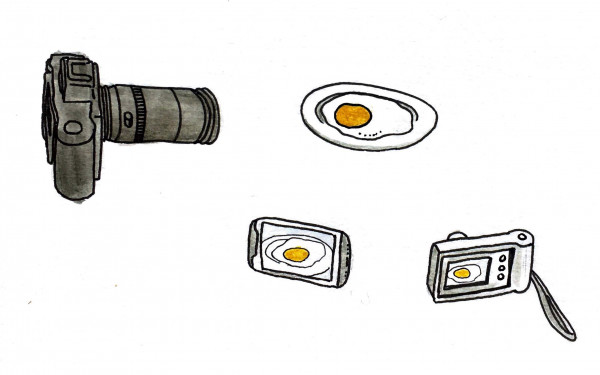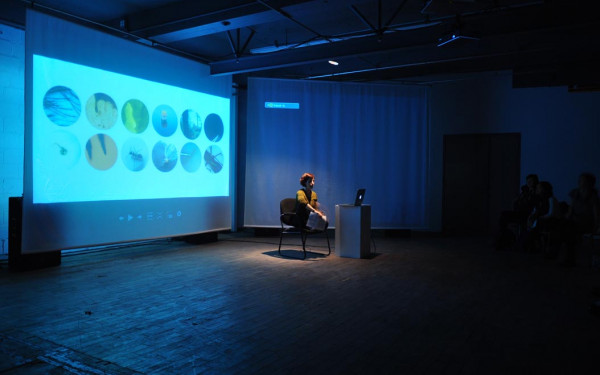‘Emotional Magazine’: The Brainchild of Sensitive Meets Inventive
Glamour, Nostalgia, and Art Find a Tangible Voice in the Digital Age
“I just want to get Emotional Magazine in the hands of Rihanna!” said Victoria Hall, the publication’s founder.
Emotional is described as a printed magazine “where the glamour is nostalgic and emotional intelligence is a word that strikes confidence in [its] readers.” Photography, recipes, fashion, comedy, drawing, writing, and painting all come together in one glittering, flashy, 80s-inspired publication.
The project aims to challenge self-promotion culture by using a mesh of art forms to make satirical political commentary.
Each issue has an individual theme inspired by a single word hand-picked by Hall.
Monachopsis, a noun describing “the persistent feeling of being out of place,” was the first issue’s theme. Enouement, “the bitter-sweetness of coming to the future, seeing how great it is, and wishing you could tell your past self,” was the theme of the second.
The thematic word, always obscure, intriguing, and loaded, ties together the artwork, colour palette, and writing in each issue, explained Hall.
The founder, who keeps a stash of potential theme-worthy words in a small Moleskine notebook, selects the content of each issue based on how it relates to the theme.
Hall hopes Emotional can help people more effectively talk about and explore how they are feeling.
“Our emotions are more than just the umbrella terms that are really popular now like anxiety and depression,” she explained. “We need to broaden our vocabulary to get to the root of [these] issues and take action.”
Hall explained that the project was born out of a need to reconnect with her emotions. Throughout her life, Hall has kept creative. She described herself as “outside the groove, walking to [her] own tune.”

Dabbling in writing, embroidery, and illustration, she has always felt a need to make art. When she realized the negative effects her job at a call centre were having on her mental health, she decided to quit.
A magazine seemed the perfect outlet for exploring the relationship with her emotions. Hall had always seen her mother as a sensitive person and realized this sensitivity had been passed down.
Emotional was the perfect name for the project. Hall had been noticing a personal desire to “escape and assimilate” into the universe of social media, a world that brought her little real satisfaction. She founded the magazine in part with the aim to take a step back from social media, she said.
Inspired by the copies of Country Home and Better Homes & Gardens that littered the coffee tables of her childhood, a tangible, printed magazine felt like the ideal tool with which to foster long-term engagement with her readers.
The founder doesn’t describe herself as a technophobe, but instead as an “anti-Instagram for artists.”
“Being creative is a flow,” she said, “and with [platforms like] Instagram, you always have to follow that algorithm.”
Social media forces artists to always promote the best image of themselves, pointed out Hall, who is not an advocate of this exhausting, inauthentic lifestyle.
Hall wants artists to be artists, not robots. “I think technology is a great tool,” she said, “but we have to be able to think logically beforehand to avoid encountering problems afterwards.”
Rather than an army of individual users of Instagram, Twitter, and Facebook all vying for likes and attention, Hall aims to bring people together as a creative collective that values collaboration.
Hall does the photography and graphic design herself, labelling the process “all very DIY.”
Influenced by her obsession with the 80s—especially their music videos—and inspired by styles such as Memphis and art deco, a distinct aesthetic was born out of her apartment photography sessions.
She uses her gut feeling to filter through writing and artwork contributions and selects those that fit with the theme.
“If it lit a fire in me, it was perfect,” recalled Hall on putting together the first issue.
Recipe contributor Begum Nathoo explained that there are different ways of being creative. An apothecary, Nathoo channels her artistic side primarily in the kitchen turned beauty lab.
“If it lit a fire in me, it was perfect.” — Victoria Hall
“I like experimenting with different ingredients and seeing how they work together,” she explained. “One [of the first issue’s recipes] we made by a fluke.”
For Nathoo, concocting beauty products is an emotional journey taken through perfumes and scents. She aims to bring a more internal approach to the kitchen.
Through her formulas for body oils and detox baths featured in the magazine, she hopes to dispel toxic self-care culture.
“By being involved in a creation process instead of buying into a system [of consumerism],” explained Nathoo, “you can make something [that’s] for you.”
Linda Chen, another contributor, is also fighting consumerist culture, or as she put it, the “capitalist doomsday.”
Chen, a former interior designer and aspiring standup comic, described herself as an internet “troll.” She aims to produce content that’s relevant to culture and media in a satirical way, she said. Her “Footstagram” piece in the second issue mocks Instagram influencers by recreating their posts, using bare feet as models posing in hot pink bikinis or testing colourful eyeshadow palettes. She calls it a “social media critique.”
Hall hopes to eventually design events that encourage this creative collective to come together in “the world of Emotional Magazine.” She would like to one day host interactive art conferences.
For the time being, however, she is focusing on a marketing strategy for the print magazine. Hall plans to start up an Emotional blog in an effort to become more accessible and reach a broader audience. She’s looking into profitable distribution channels. Originally, she was distributing to coffee shops. People were looking at the magazine, explained Hall, but not actually buying it and taking it home.
She is now reaching out to alternative bookstores and co-ops in an effort to find places interested in selling the magazine. The Concordia Community Solidarity Co-op Bookstore on Bishop St. currently carries Emotional.
Every day, Hall is learning. She spoke about figuring out how to use Illustrator, Photoshop, and InDesign as one of the biggest challenges she faced. Before she produced the first issue, she had never used the Adobe programs.
“I had a pop-up, and the day before I found out I couldn’t get [the magazines] printed [properly] because of mistakes I made in the layouts,” she recalled. She ended up going to the event with the pages mismatched and out of order.
Thankfully, nobody noticed—or, at least, they kept it to themselves.
Weaving together a myriad of art forms, the magazine provides a much-needed space for creatives of all sorts to come together and collaborate on one cohesive, tangible project.
There’s no question Rihanna; pop-star, actress, fashion designer, and businesswoman—known for embracing a gamut of musical genres and outlets of self-expression—would love Emotional Magazine.
Hall said she looks up to multifaceted artists like Rhianna because of how self-referential their work is. She is inspired by their unapologetic self-expression.
People are interested in Rihanna because she is being true to herself, explained Hall.
She hopes the magazine can inspire people to embrace who they are by discussing their ideas and emotions. We need more listening and empathy in order for people to hold on more tightly to their ideals, she said.
Hall wants her work to spark conversation and discussion rather than one-sided debates with the sole purpose of getting a point across or pushing an ideology.
She emphasized the importance of being open to teaching others without tying an agenda to it.
“The person you are talking to may not end up completely changing their philosophy, but maybe you sparked something in them,” she explained.
Though the ultimate goal is to reach Rihanna, Emotional does so much more.


_600_832_s.png)

2_600_375_90_s_c1.jpg)

